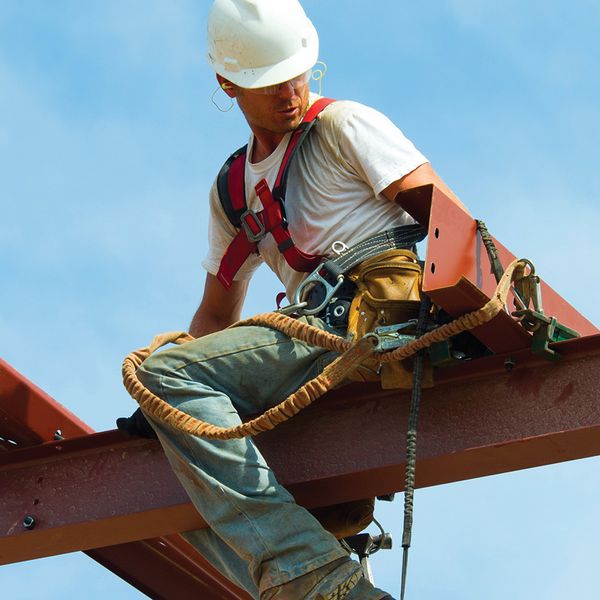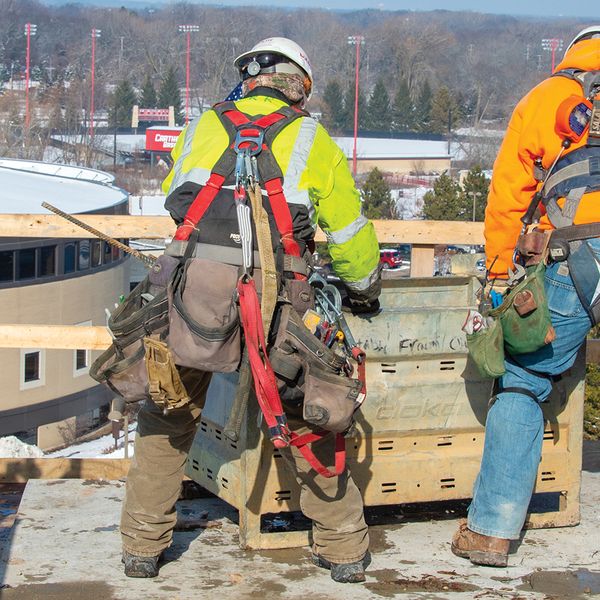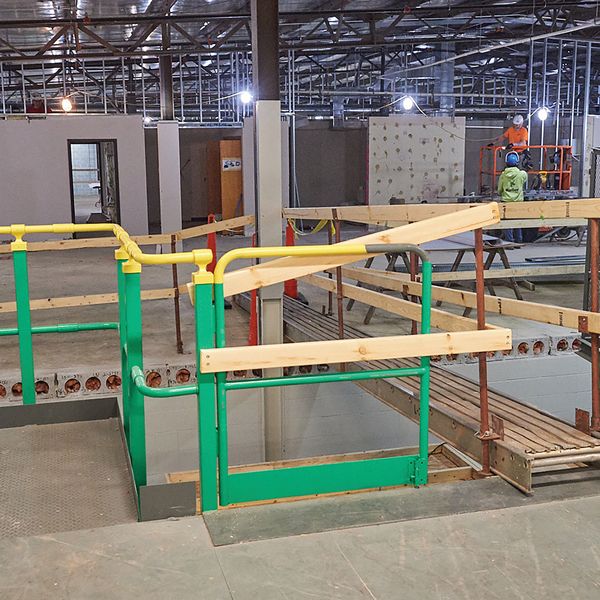Know the difference between fall prevention and fall protection
There are two main philosophies when it comes to addressing your jobsite’s fall hazards that you should know about:
- Fall prevention, and
- Fall protection.
It’s essential to know the difference between these two methods to reduce the likelihood of death or a severe injury occurring due to a fall event on the job. Fall prevention should be the first choice, but when that cannot be used, workers will have to rely on fall protection.
Fall prevention
Fall prevention aims at preventing a fall before it occurs. Processes, equipment, and methods can be used such as: guardrails, restraints and positioning devices, warning lines, controlled access zones, and safety monitors.
Guardrails
Guardrails can be installed at leading edges on your jobsite. If they’re too low, workers can easily fall over the top rail. Per OSHA 1926.502, Fall protection systems criteria and practices, the top rail must be between 39 to 45 inches plus or minus three inches. It also needs to support 200 pounds of outward or downward force within two inches anywhere along the top rail.
Restraints and positioning devices
A restraint system can be used to prevent a worker from falling. In an aerial lift, workers use a harness and lanyard attached to an anchor point, so the worker does not fall out of the basket. Many of my workers mistakenly assumed the harness and lanyard were fall protection — but it’s for fall prevention. Train workers to keep their feet on the basket’s floor and not step on its guardrail. The basket’s guardrail is also another form of fall prevention. Wearing a harness and lanyard also prevents a worker from being catapulted out of the basket.
Positioning devices prevent a worker from falling more than two feet and are used on vertical work surfaces like a utility pole, column, or pillar. My ironworkers often used a positioning device as they worked at heights to build rebar cages for columns. Using positioning devices allowed them to work using both of their hands while leaning outward from the column. As discussed by OSHA in a letter of interpretation dated August 14, 2000, construction workers in bucket trucks, aerial work platforms, and scissor lifts cannot use a positioning device as a restraint because they are working on a horizontal work surface.
Warning lines and controlled access zones
OSHA 1926.502, Fall protection systems criteria and practices, requires that warning lines are erected on all sides of the roof, and it must be erected 6 feet from the roof’s edge. Workers aren’t allowed in the area between the roof’s edge and the warning line. If only a small area of an elevated work area will be worked in, consider using a controlled access zone instead. A control line must be between six and 25 feet from the unprotected or leading edge unless concrete precast members are erected. Access within this zone must be controlled.
Safety monitors
Where traditional fall protection, warning lines, and controlled access cannot be effectively used to prevent falls, a safety monitoring system can be used instead. The safety monitor must remain within the workers’ eyesight so the monitor can warn workers about fall hazards or unsafe working conditions. Remember that the safety monitor cannot be assigned other duties.
Fall protection
Fall protection is used to protect a worker after a fall has occurred, such as: fall arrest systems, and safety nets. When fall prevention processes, equipment, and methods aren’t effective in preventing falls, fall protection must be used.
Fall arrest system and safety nets
A personal fall protection system (PFPS) uses an anchorage, connectors, and a body harness combined with a lanyard, deceleration device, or a lifeline to stop a worker’s free fall during a fall event. Remember that a PFPS isn’t a one-size-fits-all solution. A competent person must properly design a PFPS system specific to workers’ specific needs and the jobsite’s fall hazards. Also, train workers about suspension trauma as part of your regular jobsite’s fall protection training.
Safety net
My safety net experience is that it eventually becomes a debris net for overhead falling materials, scrap pieces, equipment, and tools that have fallen instead of being used as fall protection. Like a PFPS, safety nets are designed to stop a worker’s free-fall after a fall event has occurred. Safety nets should be installed as close as possible to the walking-working surface but no more than 30 feet below it. Inspect nets weekly, make sure they have adequate clearance, and perform a drop test after installation.

















































